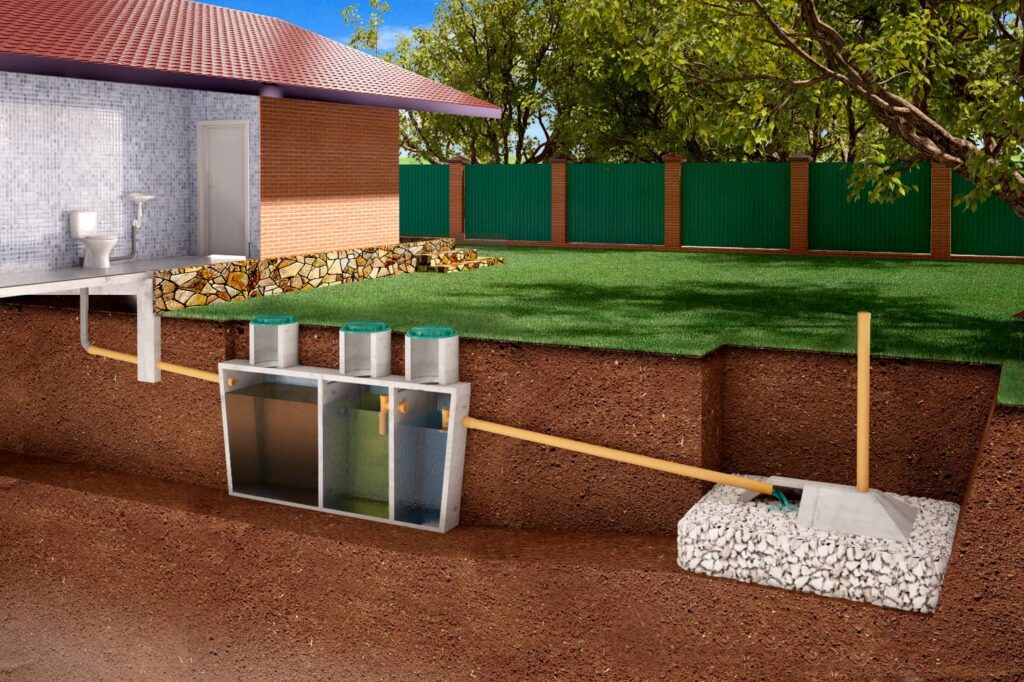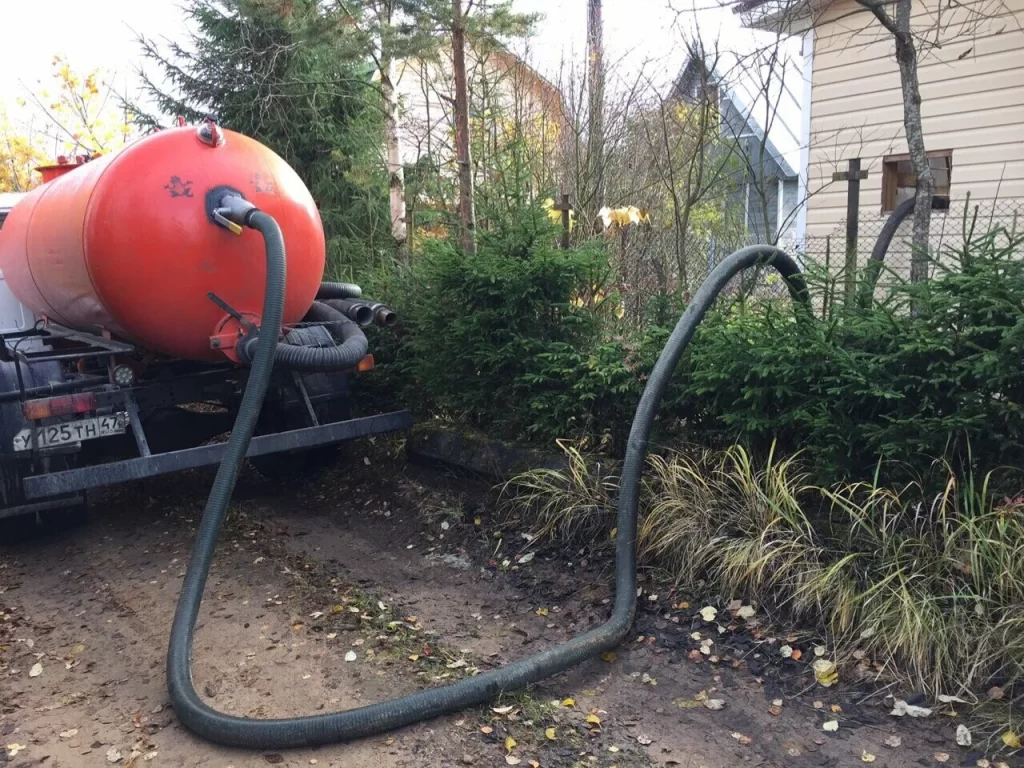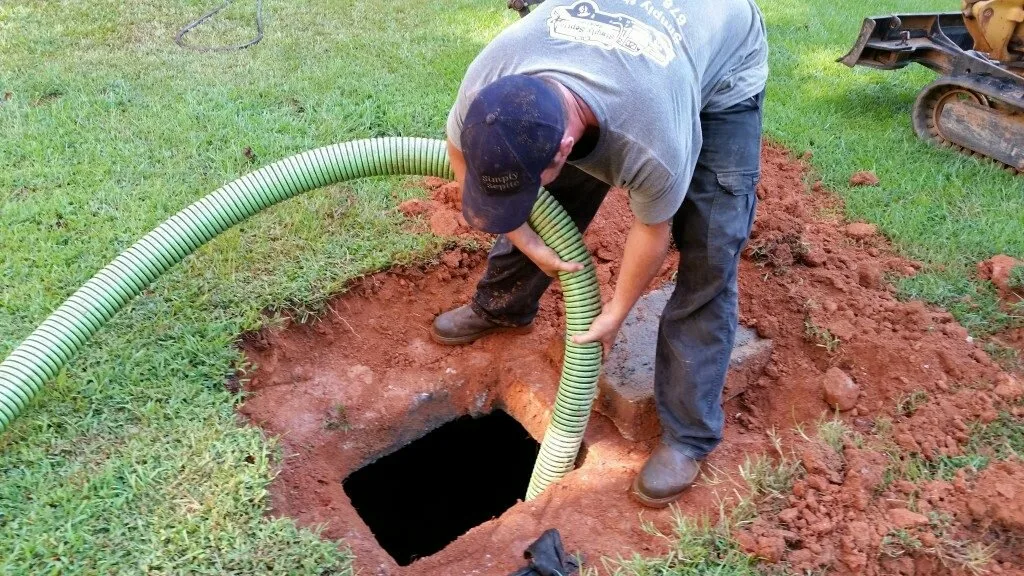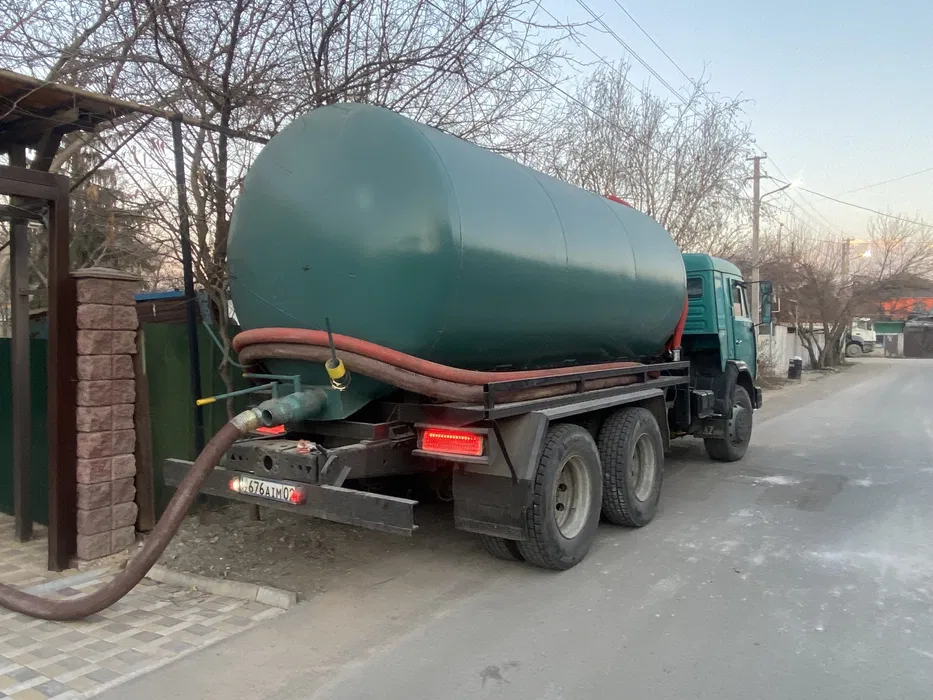The difference between the “classic” cesspool and modern treatment systems is visible even to the naked eye. But for some reason, many dacha owners refuse from more effective solutions, even despite their quite democratic cost.
Therefore, we decided to consider the differences between the “grandfather” and “progressive” methods of disposal of sewage, tell how often to pump out the septic tank, as well as tell about innovative maintenance-free systems of autonomous sewerage.
The main differences between a septic tank and a cesspool
Cesspool – the simplest, but not the most “clean” and pleasant way to dispose of sewage and impurities. In most cases, we are talking about a leaky tank buried in the ground. The walls and bottom of such structures let a certain amount of water into the soil, while solids and contaminants remain at the bottom of the tank and need periodic removal.

Septic tanks, on the other hand, work on a completely different principle. Usually, such systems imply the presence of three separate tanks (or chambers within one structure), in each of which separate purification processes take place:
- Separates wastewater into water and solids;
- Separates suspended particles under the action of microorganisms;
- Filters the water for safe discharge into the soil.
Separately, it is worth mentioning local treatment plants. Structurally, they do not differ from septic tanks, but they work many times more efficiently due to energy-dependent equipment and several types of bacteria. In addition, they “clean” wastewater up to 98%, which allows you to reuse it, but only for technical purposes.
Simply put:
- Pit – a single leaky tank, “clogging” the surrounding soil and emitting unpleasant odors;
- Septic – a system of hermetically sealed tanks, preventing the entry of sewage into the ground, odors – outside.
It is important to remember that the cesspool is an accumulative design. That is, it needs periodic pumping of collected sewage. In septic tanks, the sewage is divided into water and small particles settling at the bottom of the sump in the form of sludge, while the liquid in sufficient quantities flows into other chambers and is discharged in the chosen way. That is, it takes much longer to fill and therefore does not need to be cleaned as regularly.
What affects how often the septic tank is pumped out
The frequency of septic tank maintenance depends on several factors:
- The volume of the tank;
- The load on the sewer system;
- Number of occupants in the home;
- The efficiency of the drainage system;
- The type of bacteria used to clarify the effluent.
In most cases, the frequency of cleaning is prescribed in the accompanying documents. But is purely of a recommendatory nature. And experts agree that it is necessary to clean the septic tank based on its current state.

How to understand that the septic tank is time to pump out?
First of all, look in the instructions for the treatment plant: there you can find out how often the septic tank should be pumped out according to the manufacturer’s regulations.
Check the level of sediment in the tank: if the tank is less than a third full, it won’t be long before the next cleaning.
But there are also several indirect signs that indicate that the septic tank is about to overflow:
- Poor flushing. Water in sinks, basins, bathtubs and toilets flush much more slowly;
- Sewer odor on the property. When the tank overflows, there is less and less room for gases, causing them to escape much more intensely;
- Buoyant grass growth at the location of the septic tank. The sewage that seeps out increases the rate of plant growth.

How does the cost of pumping out a septic tank and a cesspool differ from that of a sewage collector?
A cesspool is ONLY pumped out by a sewage truck, with the pumped effluent being transported for filtration and safe disposal. Given the volume of sewage, the rate of filling and the frequency of pumping, the cost of maintenance is not insignificant. Unlike professional maintenance of modern sewage treatment plants, which require pumping out a small volume of solid sludge once every few years.
To clean the septic tank, you can use an ordinary sludge pump, pumping the collected sludge into a pre-prepared container. At the same time, it should be noted that in deep biological treatment stations, sediments serve as a medium for the life of anaerobic bacteria, so the pumped sludge sediments can be used as a fertilizer for the soil on the site. But taking into account how often the septic tank in a private house is pumped out, on “long distances” the cost of calling the collectors will be many times lower.
Is it necessary to clean the septic tank after pumping
Let’s assume that you have decided to service your septic tank yourself. How often should you clean and pump out the sediment left after pumping out the sludge? Without regular pumping, the solids can compact into a thick crust that will require additional cleaning of the entire system.

The walls of the tank can be cleaned of dirt with a high-pressure washer. With pipes, however, everything is a little more complicated. They can be cleaned using:
- Sanitary cable;
- Hot water at high pressure;
- Special chemical compositions.
Quick drainage of water in the house indicates that you have coped with the cleaning. If the problems continue, it is more advisable to call the masters who have special equipment for cleaning sewers.
Are there septic tanks without pumping?
Lyrically speaking, no. Unfortunately, engineers have never managed to think through a design that is resistant to the formation of deposits and contamination of individual elements. Nevertheless, they were able to develop several models of purification stations that require maintenance no more than once every 5 years.
The secret lies in the carefully thought-out design, which includes mechanical, biological treatment and filtration of the effluent. All this accelerates the decomposition of sewage and makes it “waste-free” – the treated water and sludge can be used for gardening!